The Apex Interviews: Ian Callum CBE - Automotive Design Legend
Our interviewee for the Apex this week is one of the most celebrated car designers of the modern era, Ian Callum CBE. With some of the most iconic British car designs to his name, including the Aston Martin DB7, Vanquish, Jaguar F-Type, F-PACE and the I-PACE, winner of last year's World Car of the Year award, he needs little introduction. We talk to him about how his passion for design began, his design philosophy and who inspired it, and also how his new business is remastering his original design into the Vanquish 25 by CALLUM.
Charles Clegg interviews Ian Callum CBE for The Apex by Private Collectors Club. Recorded and Produced by Jeremy Hindle & Demir Ametov. Transcribed by David Marcus. Edited by Charles Clegg.
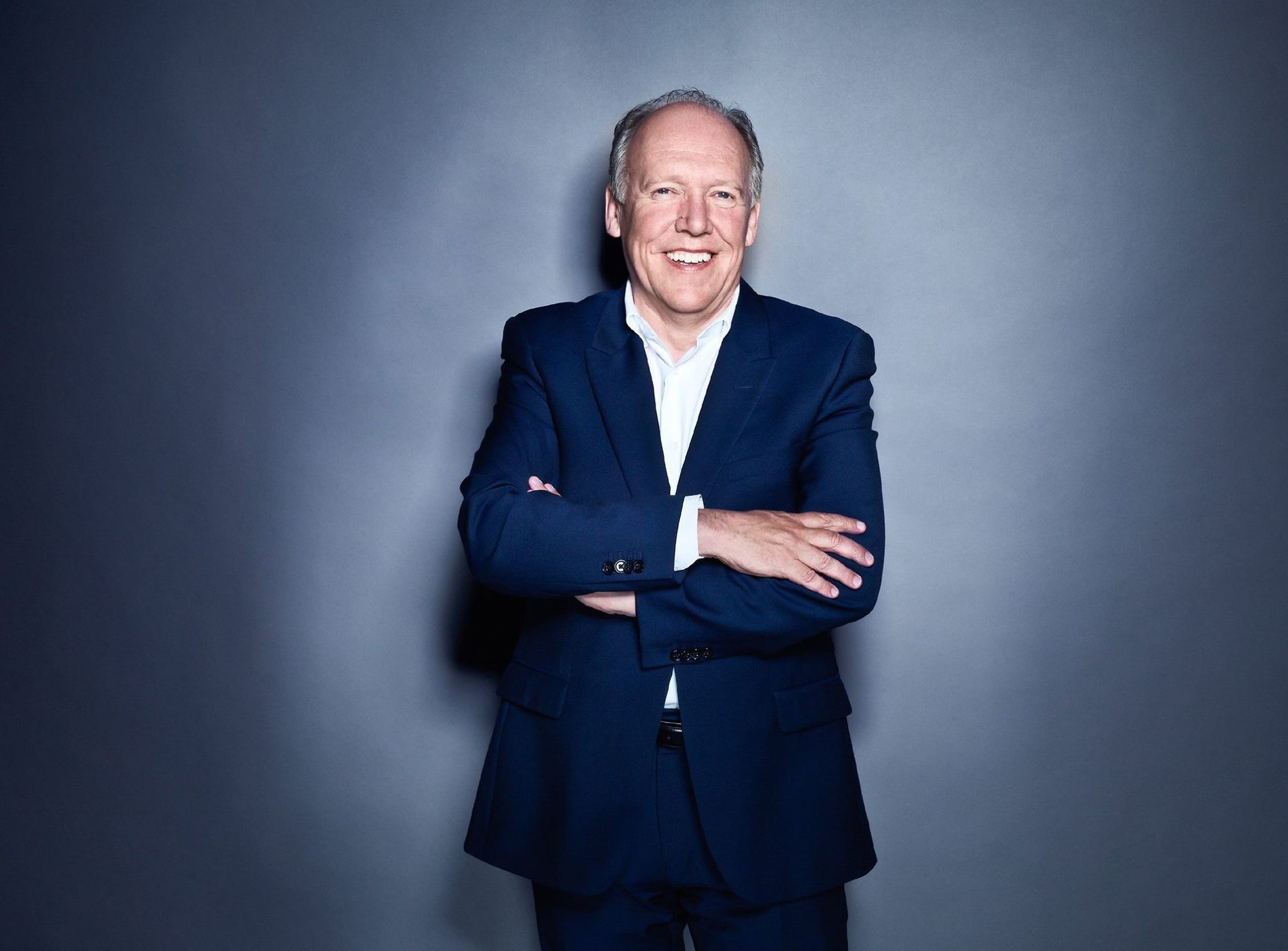
You were brought up in Dumfries in Scotland and became interested in design at a very young age. How did that interest first come about and what drew you to cars specifically?
You know I don't really know. My grandfather who lived in Edinburgh was a great lover of cars. I think he must have encouraged me. I was one of those painful children that could tell you the name of every car and its origins at the age of about 3 I'm afraid, boring everybody around me. But I think part of the appeal was the fact my father never had a car until I was about 6 or 7 years old. Although he was a lawyer, he used to take the bus to work in the morning, which was quite strange by modern standards, but that's what he did. So I think it was just the aspect of the unobtainable was more exciting than what was on the doorstep.
I grew up in a small provincial town and the most exotic cars I saw were probably Jaguars. A lot of the professionals drove Jaguars. There was one guy with an Aston Martin DB5, or even a DB4 I think in those days. He was actually a farmer, when farmers were wealthy obviously! So yes, I just grew up with a love for cars.

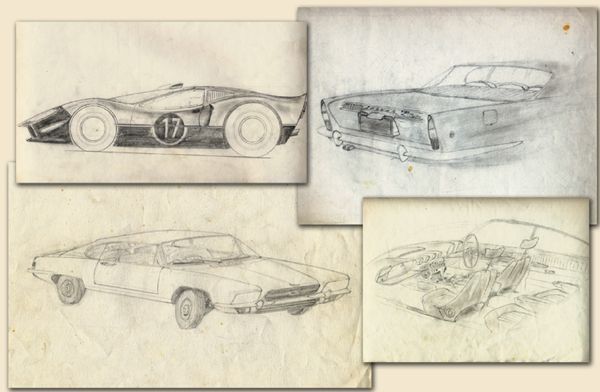
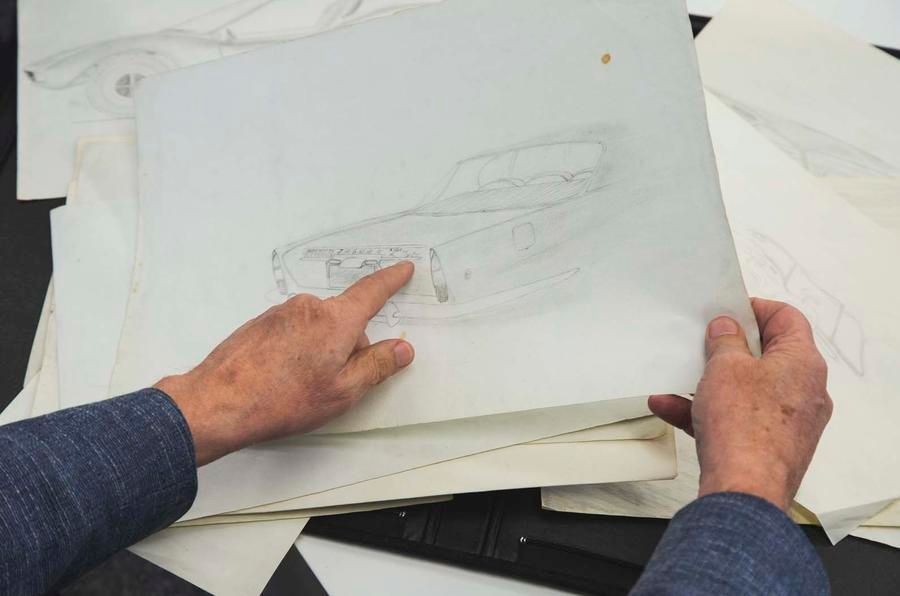
Some of Ian's designs when growing up. Source: Callum Design
I started off drawing at a very young age. I used to draw things around the house, I remember that quite clearly. I used to draw the Hoover. I used to draw anything mechanical. Even when we got a TV, I would draw the TV set. I just loved drawing things which were obviously mechanical or electrical. I discovered cars, I think probably fairly early on, and started drawing these as well.
I remember seeing a 356 Porsche go past and it must have been the late 50s, it would have been a new car then of course, and a silver one, and I just thought to myself, yes, that's what I want to do, I want to design those objects called motor cars. That's where it started. I must have been about 3 or 4 at that point, so I was a very young age.
Am I right in saying you actually did a design which you sent to Jaguar at the age of 13 or 14 years old?
I did a number of designs. In those days I was trying to emulate what I thought the fashion was from various sources. I was a great lover of Jaguars even then and, of course, GM cars as well, there's a reason for that, because the American GM cars at the time were fabulous, and Italian cars. And so I did what I thought were ideas for Jaguars and I sent them in to William Heynes, who was the chief engineer at that point, the Vice President of Engineering, and he replied, twice actually. I never had the privilege of meeting him but I certainly feel very honoured to have been part of that world even then. So Jaguar became very much close to my heart at that point. They responded to a letter and I felt part of the family and that's what drove me to the brand eventually.

I know characters like Sir William Lyons and Malcolm Sayer with the D-Types and C-Types, and obviously William Haynes as well, some amazing designers and characters. At the same time, when you left the Royal College of Art and went to work for Ford, you ended up as Design Manager for Ghia in Turin, one of the great Italian design houses alongside Pininfarina, Zagato, Bertone and Italdesign. Have these well-known design houses influenced your own unique design style and is there a specific designer that stands out for you?
Yes, I always loved Pininfarina design. One of my favourite cars is the 250 SWB which was Scaglietti and I think he was at Pininfarina at the time but it was certainly of that era. There was a certain purity about those cars which I completely understood and I admired, still to this day. Even if you looked at a lot of British cars or even French cars, all the BMC cars were designed by Pininfarina and the Peugeots were all designed by Pininfarina. They had a cleanliness and a sort of honesty about them which I could appreciate.
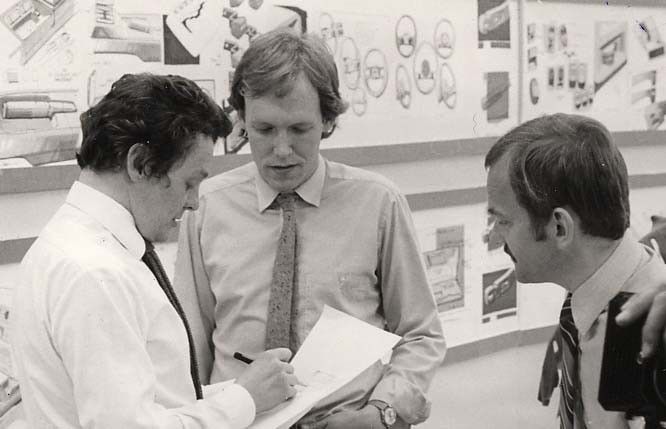
That sense of simplicity and clean design really influenced me, but of course the great inspiration was Giorgetto Giugiaro. I remember going to visit him when I was a student, I would be about 19 or 20 at the time, and I never met him again until last year, which was quite interesting. He complimented me on my design work which I found very flattering, so full circle. But yes, Giugiaro and Italdesign were a huge influence on my thought process at the time, absolutely.
I lived in Italy for a while, both my sister and brother lived in Italy as well, they speak fluent Italian, so there's a strong association with Italy in our family. Growing up in Scotland we have a lot of Italians living in Scotland. So that sense of romanticism I think runs through both nationalities.
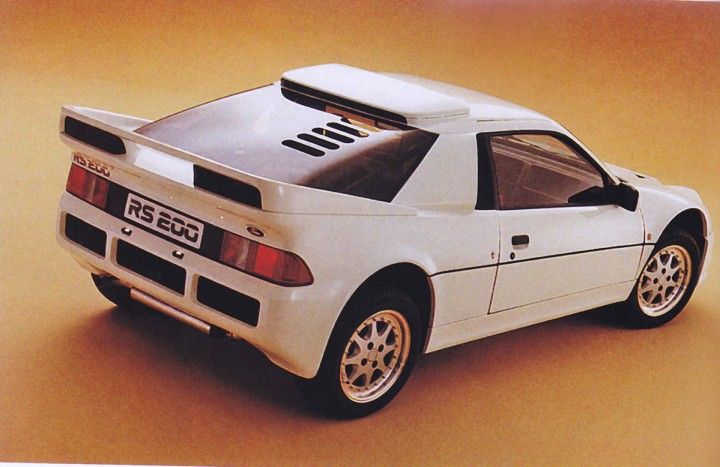


The Ford RS2000 was one of the cars Ian worked on at Ghia. Credit: Ford
Certainly in the past, there have been some fantastic pairings. For instance, the DB4 GT Zagato, a British car with an Italian body and it just comes together beautifully, in my opinion.
Yes. Even if you look at the Aston Martin DB4s, DB5s and DB6s, they were Italian design, but they had a restraint and almost conservatism about them which was very British. I think the Italians involved at that point designing these cars appreciated their nationality and they wanted to bring a very British feel to them. So it brought the purity of Italian design into a British genre, which was a great combination.
You talk about purity of design which I think is a really interesting idea. Certainly in architecture, and indeed in nature more generally, there are certain ratios such as the Golden Ratio which determine pleasing dimensional relationships between, for instance, the width of a building and its height. The final result is a building which feels entirely in proportion. With car design, are there similar ratios or patterns you have to keep in mind?
Yes absolutely, but I don't think you do it consciously. I think if you design car after car they become instinctive. I think you find what you feel comfortable with. The thing is with car design, as with buildings, you have to have a sense of exaggeration about them as well. I think to give the excitement is you take the sense of perfection, but then you exaggerate some aspects of it.

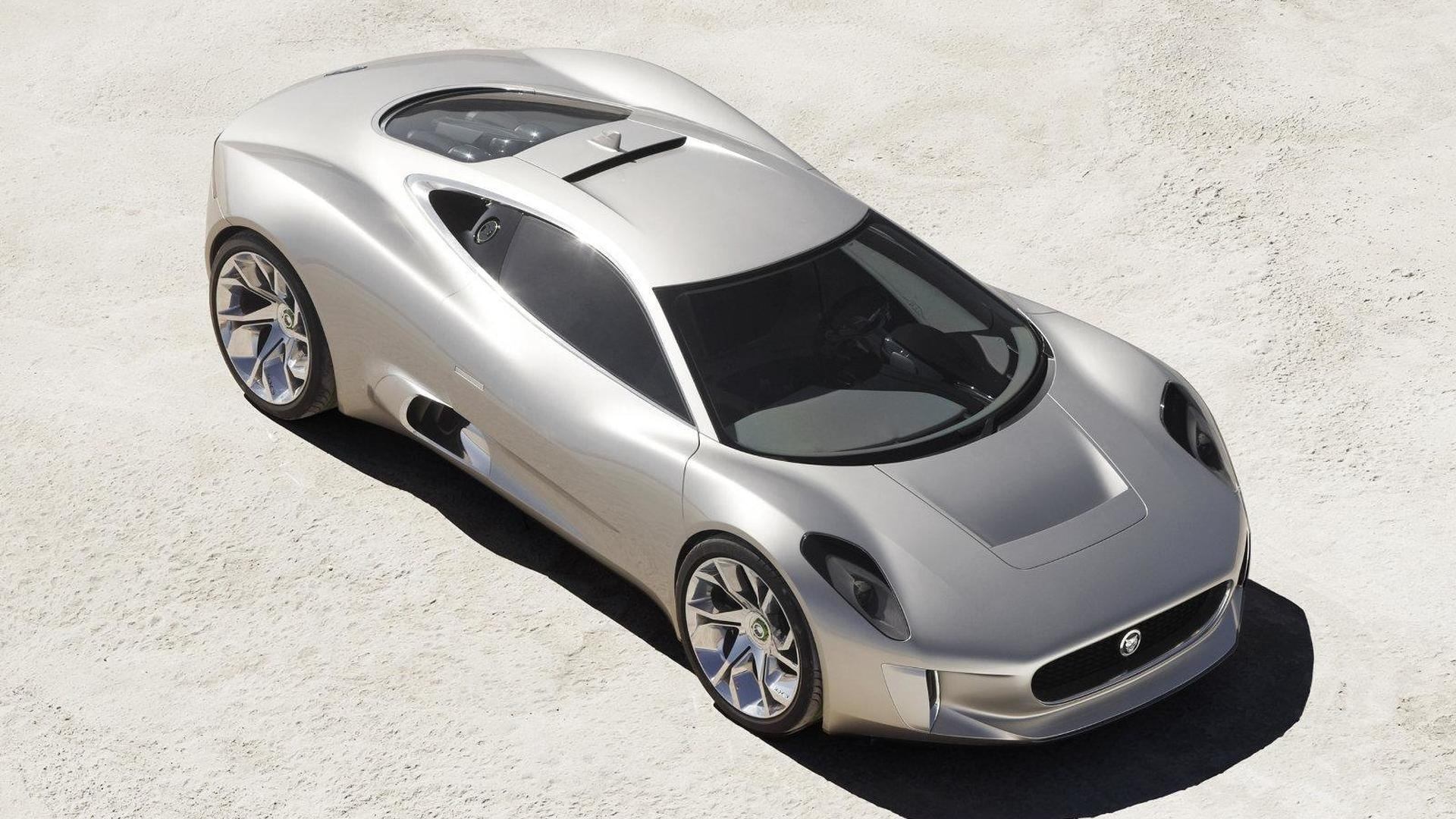


The Jaguar C-X75 hybrid-electric concept car designed by Ian and produced in partnership with Williams F1. Source: Jaguar
So that sense of pure proportion at times is not always going to work, you might just end up with a mundaneness which is too familiar. So I always try and put an exaggeration into some form of my work, whether it be the belt line or the length or the lines themselves or the size of wheels, of course that's a very obvious exaggeration that all designers love. That sense of discord of exaggeration, as I call it, does prevail. It's important to give the car some character.
But underlying of all that, proportions are very important, but I think the way it relates to the ground is also very important, the way the car sits relative to the ground. That's something that, unlike say an aeroplane which is surrounded by fresh air, a motor car relates to the ground it sits on. That's how we see it and that's how we perceive it and that's how it belongs to the world. That relationship is hugely important.
We go on about proportions in stance all the time, it's such a well read phrase these days but it's important. You look at some of the older cars and the stance of the E-Type was terrible actually, but other areas of it forgive it for that. But for modern cars, it's very important to have cars that relate to the ground properly.
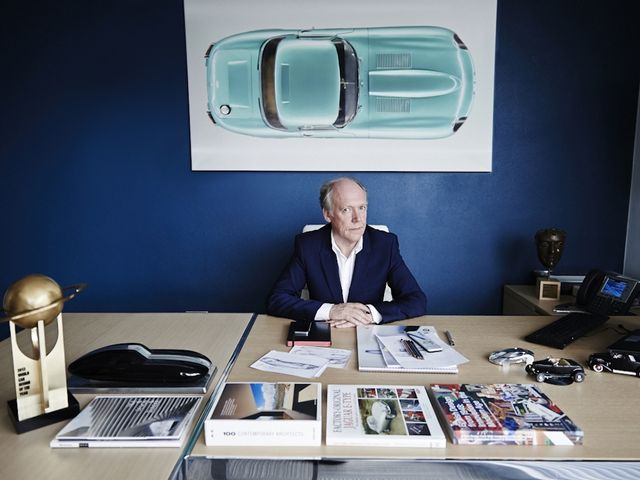
Interesting. Traditionally when I think about car design, I imagine someone with a blank piece of paper who starts sketching out ideas and the form of a vehicle starts to evolve from there. These days, given all the different software and technology available, has the basic pencil and paper still got a role or has it all been superseded by software?
No, it's still got a role. How you get from idea to the end result, the process may be slightly different, but the thought process is exactly the same. You have to think of ideas in your mind and then you sketch them. I still sketch, I sketch all the time and that's my medium. A lot of young designers go from Sketchpad, and they still use Sketchpad.
My design team at Jaguar were all sketching initial stages of any idea, along with myself, and then that would transfer into these fantastic renderings you see done in Photoshop. Again that's just a technique of illustration, it still requires sketching. Then it goes into a three dimensional model, which is a much quicker process than it was when I started. Once we get a three dimensional model, we then still have to go back into a full size clay model to assess it in a human proportion way. Walk around it, touch it, feel it. That's still a big part of the job, changing the car in clay form. Most cars are still designed that way. The human touch is still there, believe you me.
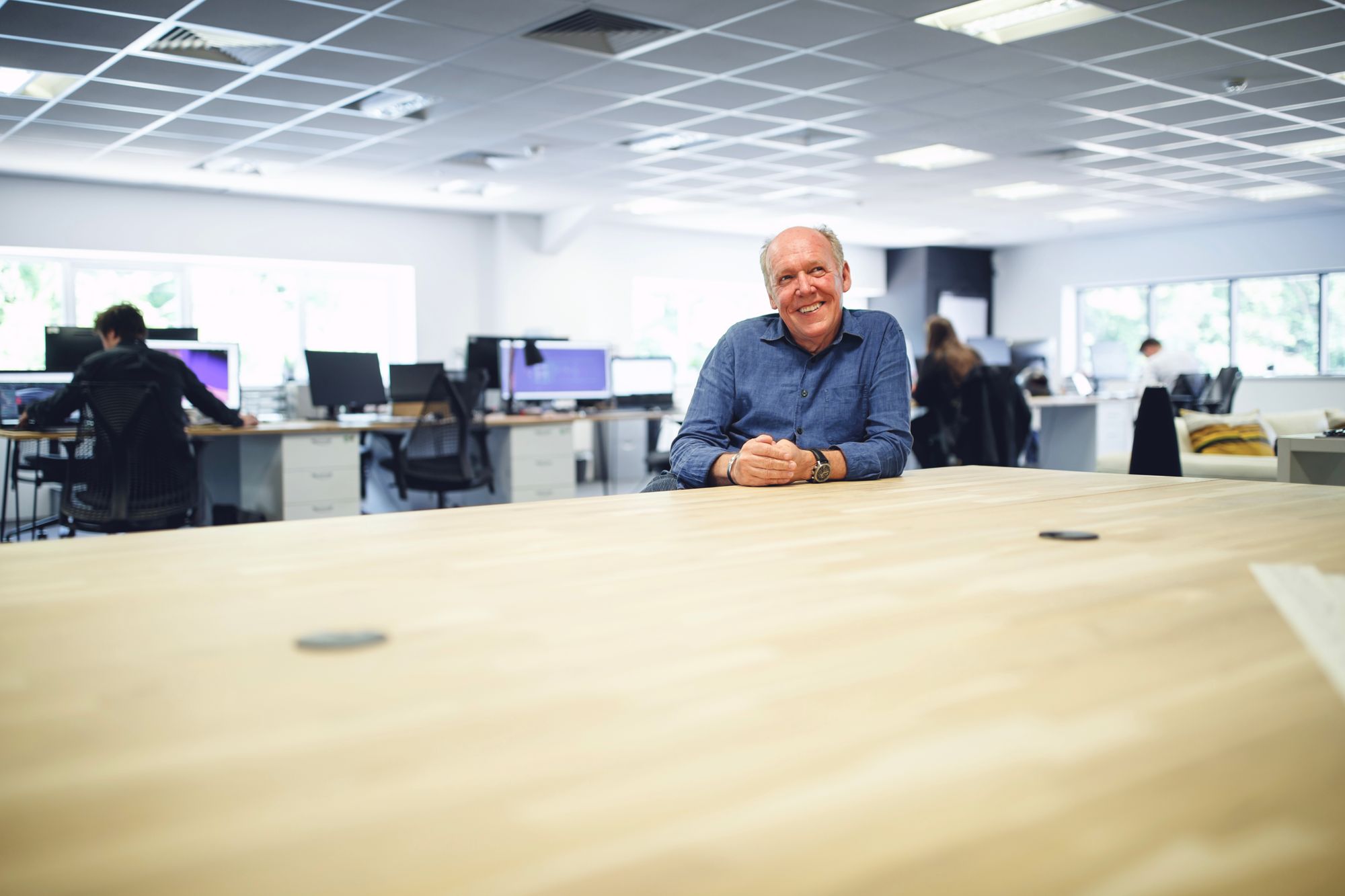

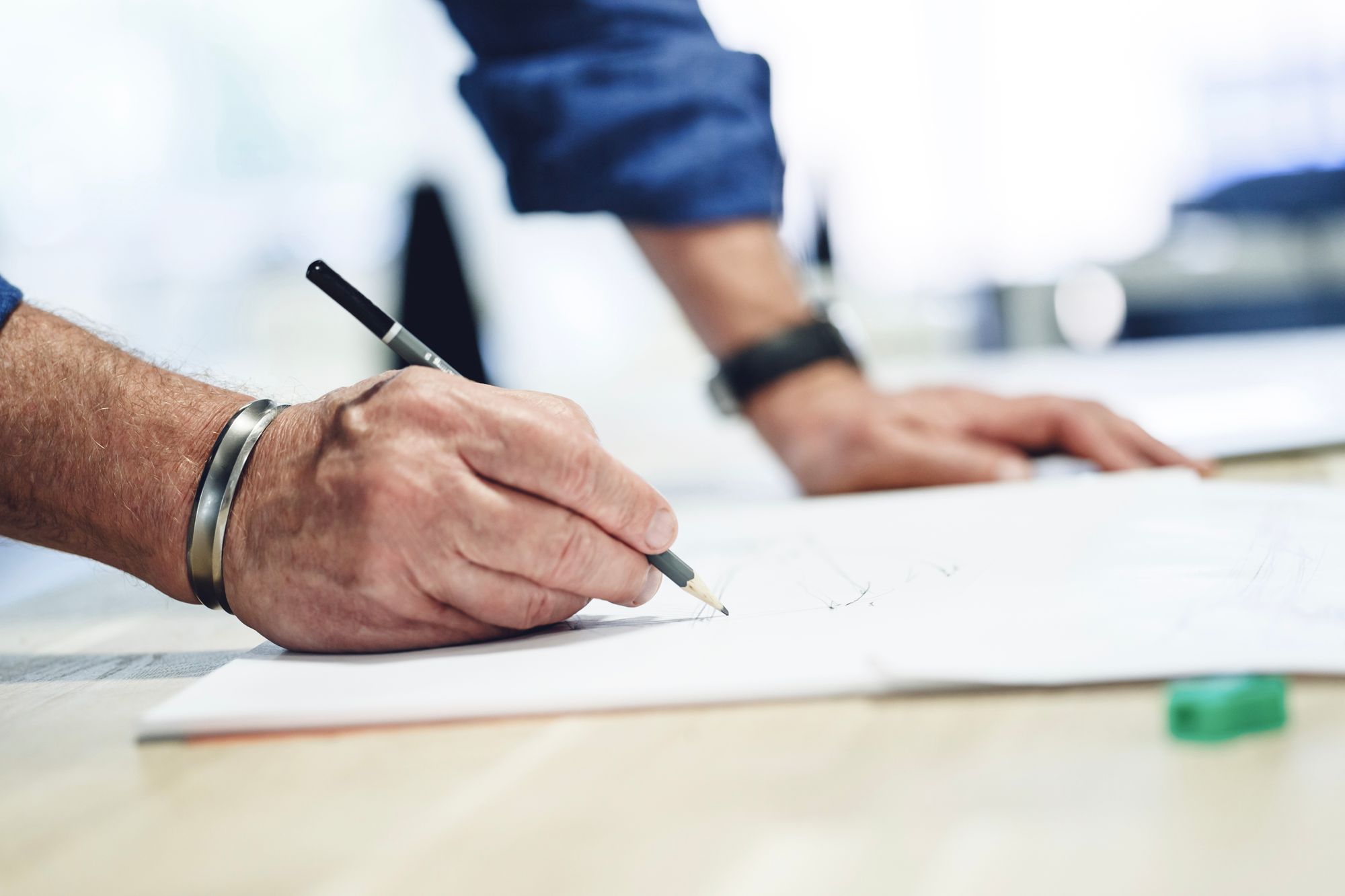
Sketching has always been a key part of Ian's design process. Source: Callum Design
That's good to hear. When you're designing a car you talk about accentuating certain aspects. Do you think it's important that someone has responsibility at a higher level for all the different components which go into the form of a vehicle? Obviously there is the bodywork but then you have the wheels, the lights, the rake of the windscreen, the wing mirrors, exhaust pipes, there's so many different elements that go into the composition of a car. Do you think it's important that one person holds the pen on the full design of a vehicle or do you think it can be done by different people?
Well, it is an actual fact that it is done by different people because you have engineering, you have package engineering, you have mechanical engineering and all these elements have to come into the remit of the objective designing a car. Now most car programs are run by project management and program engineers actually. Then the designer converses with those engineers very closely and hopefully negotiates a sort of vehicle that they want to see coming out the other end. So it really is teamwork.
I think in design terms, it's good to have a leader with a consistent point of view that carries a brand through with some sense of, I would say repeatability, but certainly something that's recognisable. That can change obviously through the generations. I think it's important to have somebody leading the team through specific thoughts and ideas that relate to the brand, that's very very important. Otherwise you get these different designs that really have no relationship to each other.
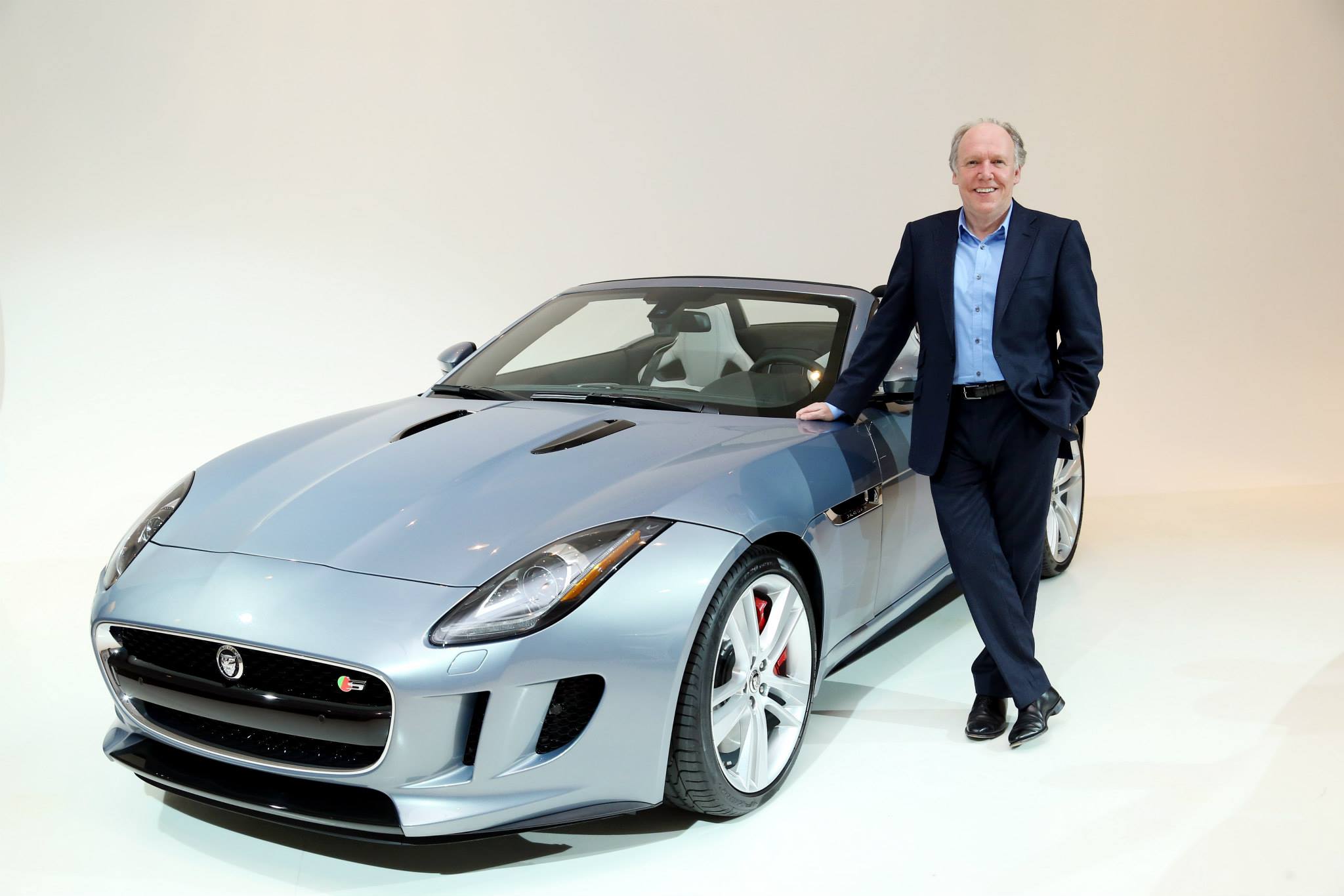
So a design boss is important yes, but also the chief engineer is important as well and the way they communicate with each other is hugely important. You can tell when there's angst in a car where the designers have not got what they wanted, the engineers ruled over the packaging or whatever it is. They're very good cars and some of them are very beautiful, but you can tell by the dimensions and overall shape that they are born out of metrics rather than emotion. Then what happens is you see a lot of surfacing going on in the car because that's the only part left to designers to play around with, is the surface of the car and it becomes very ornate and very complicated because they don't have the privilege of messing around too much with the profile.
I'm glad to say at Jaguar, indeed Land Rover as well, and Range Rover, but at Jaguar in particular, we always had the privilege of negotiating the overall shape of the car, which is exactly where William Lyons was coming from. He always felt that Jaguars had to be beautiful and that starts off the proportions and so he would compromise certain things in order to get the car to look as beautiful as possible. That still prevails. It's a battle sometimes, yes, not everybody agrees with you, but that's part of being a designer, I suppose.
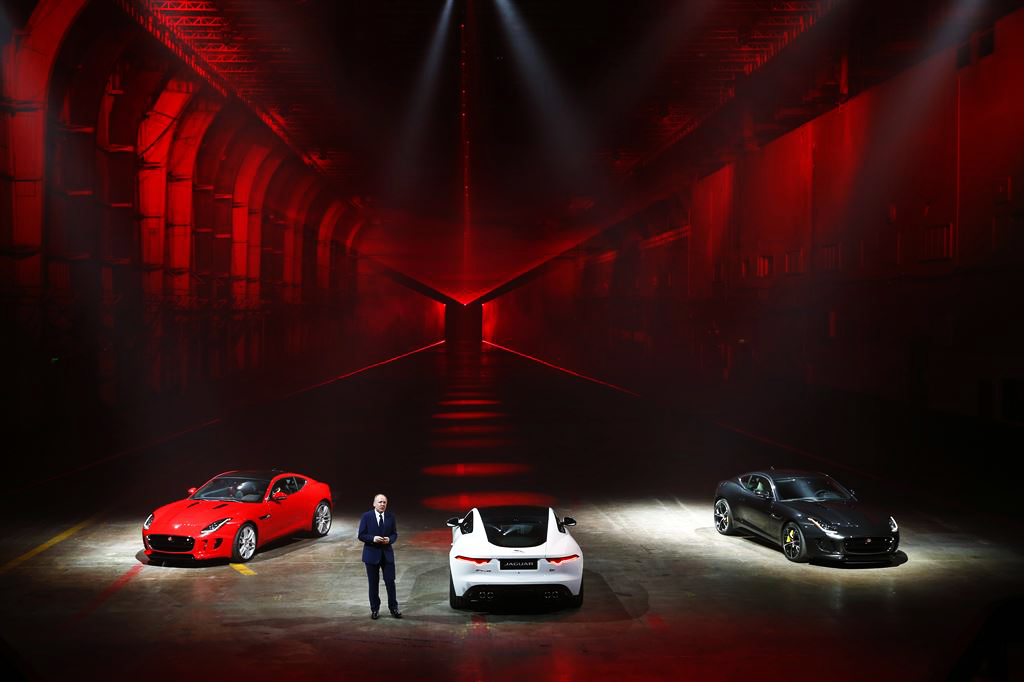
One of your most famous designs is, of course, the Aston Martin DB7, while you were at TWR. But for me personally, the Aston Martin which I was most excited about when I first saw it was actually the Vanquish. I remember seeing the Vanquish design for the first time, or I think it was technically the Project Vantage Concept which became the Vanquish, back in, I think it was 1998. I just fell in love with its purposeful design. Indeed, it's probably the only car where I remember exactly where I was at that moment when I first saw it, going into a maths lesson at my school. What were your influences for the Vanquish and how did your vision for the car differ from the DB7?
Well, it's quite interesting because Bob Dover was the Managing Director of Aston, and Bob and I have since become very good friends, but he challenged me and he said look, we need a more muscular car to replace the V range, which of course was the Virage, and that range of cars which had to be replaced. So he asked me to build a more muscular version.

My influence for that car really was the DB4 GT Zagato in so many ways, and also to some extent the 250 SWB Ferrari, which was always a favourite of mine because it looked like it had real energy in it. It's difficult to explain this, if people get it, they get it, and if they don't, well it's difficult to explain it. If you look at the lines of the Vanquish, they look like they're trying to get somewhere, they look like they're moving forward, they look like there's some energy in them and that's what I wanted to capture. Obviously the Zagato is there in the rear haunches, in the rear fenders, in the rear wings, very much that sort of Zagato DB4 GT influence, but taken to a more modern time, as it was 25 years ago now.
But the interesting thing about that time is we only had one design review. You talk about having one view and one vision, this really was one view and one vision, it was mine. We had one design review with Bob Dover and Jacques Nasser, who was then Vice President of Ford, and they really left the car for me to create and nobody else interrupted and we just made it. So there's sometimes an advantage in being autocratic with these things and letting them happen, so that car is full of spontaneity.
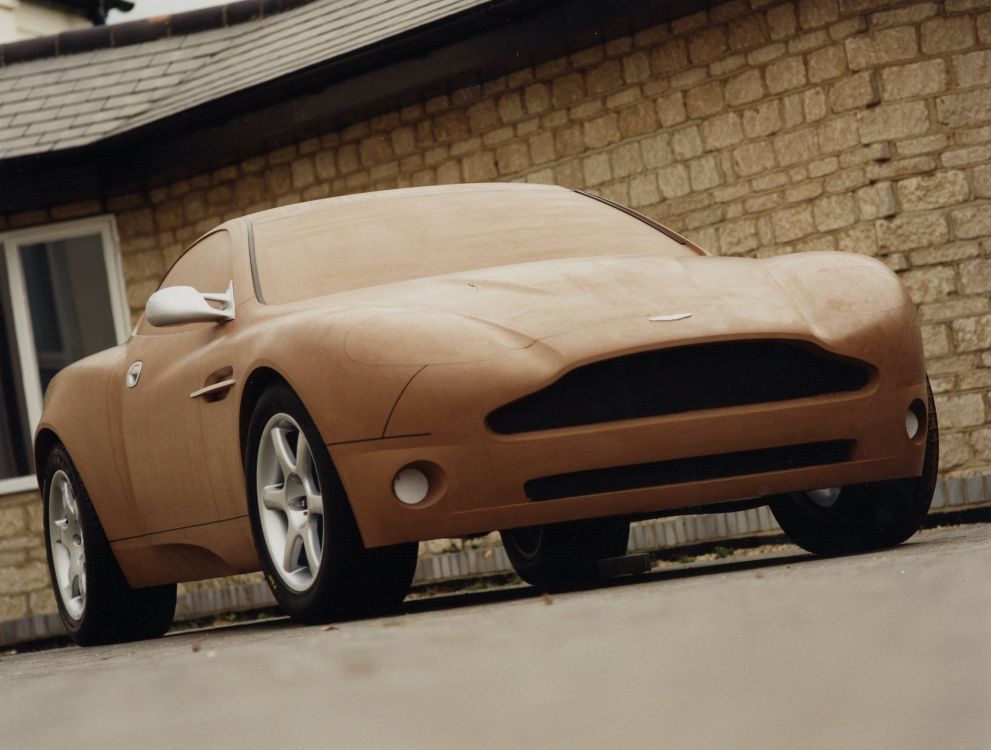
Part of my job is to capture the spontaneity of the first designs and hold onto them as much as I can through the process. That's really what my main job always was. But with this car it was quite easy because nobody interrupted. [laughs] We made the car around the shape which is very unusual. For instance, the base of the screen is cantilevered over the engine because that's the shape I wanted. In most cases I would have been forced to bring that back so the engine wouldn't be fully exposed, but I was fairly insistent that it had to be what it was going to be and that was it.
I guess that spontaneity of design these days is a lot harder given all the regulations, whereas if you go back 50/60 years they could produce whatever they wanted in the 50s and 60s. There were some unbelievable designs but I imagine there weren't the limitations which there are now.
That is so true. You think of all the wonderful Italian show cars of the 60s. The original Stratos show car, just a wonderful piece of art, and a lot of those Lamborghinis at the time, the show cars, and the Bertone ones in particular, and the Lamborghini Bravo show car, tremendous cars. Could we build them now? Well, certainly the original show car Stratos you can never build anyway because it had a door at the front. To pass regulations now on those shapes would be nigh enough impossible to be honest. They were the golden years of innovation and design and artistry really. Much more difficult now. You're dictated in so many areas by dimensions and physics and the safety requirements.
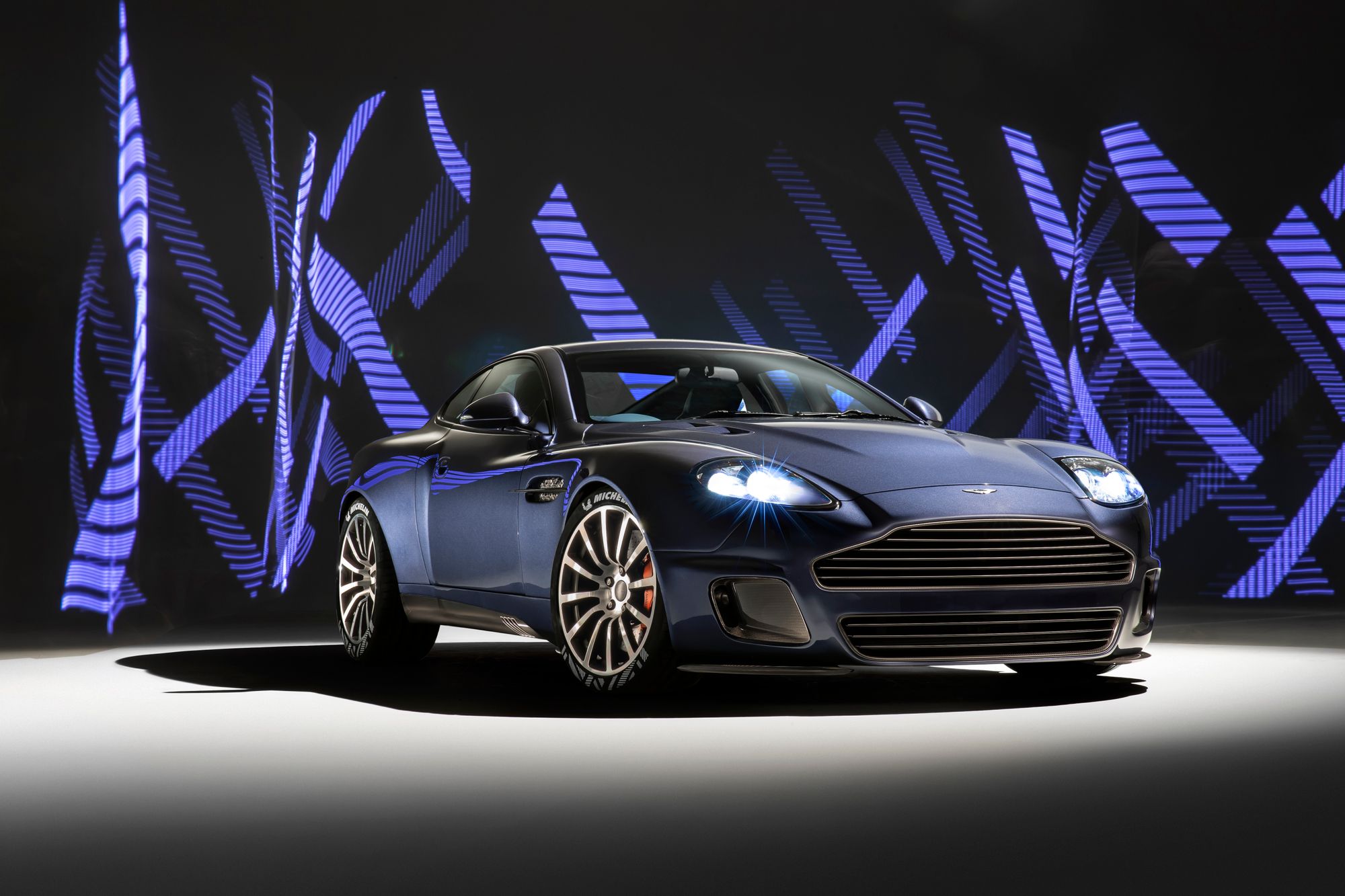
You have, of course, had a fantastic 20 year career at Jaguar, bringing in a whole new design style and arguably rejuvenating the brand. Indeed you were responsible for the design of some of the most important cars in Jaguar's recent history including the F-Type, the successor to the iconic E-Type, and the F-PACE, the first Jaguar crossover SUV. Last year you stepped down from Jaguar and you have set up a new design engineering firm called CALLUM. Can you tell us a bit about your new business?
Well, it sort of started off on a bit of a whim, really, because I bought myself a Vanquish. I'd never owned a car that I had designed. They don't give me one by the way, I have to buy them. So I looked at it and thought it's time to give this car a bit of a revamp. It never got a face lift. So I set about redesigning it for my own personal satisfaction really. Then I got together with some friends including David Fairbairn and he said well let's make a business case out of this car, we'll produce a few and it will at least pay for your face lift. I said okay and so that's how that happened.
Then towards the time I was actually leaving the company, David Fairbairn said let's turn this into a business and the Vanquish will be our first project. But the point in CALLUM Design or CALLUM as we call it, is it's all about designing bespoke items. It's not just cars incidentally, we'll be doing other things, and really having a bit of fun. It may sound a bit indulgent, but I've done 40 odd years of production cars, albeit some exotic ones, but I just felt the need to go and have a bit of fun with things which didn't really matter hugely in the big corporate world. We're a little bit more for individuals and that's what this car is about.
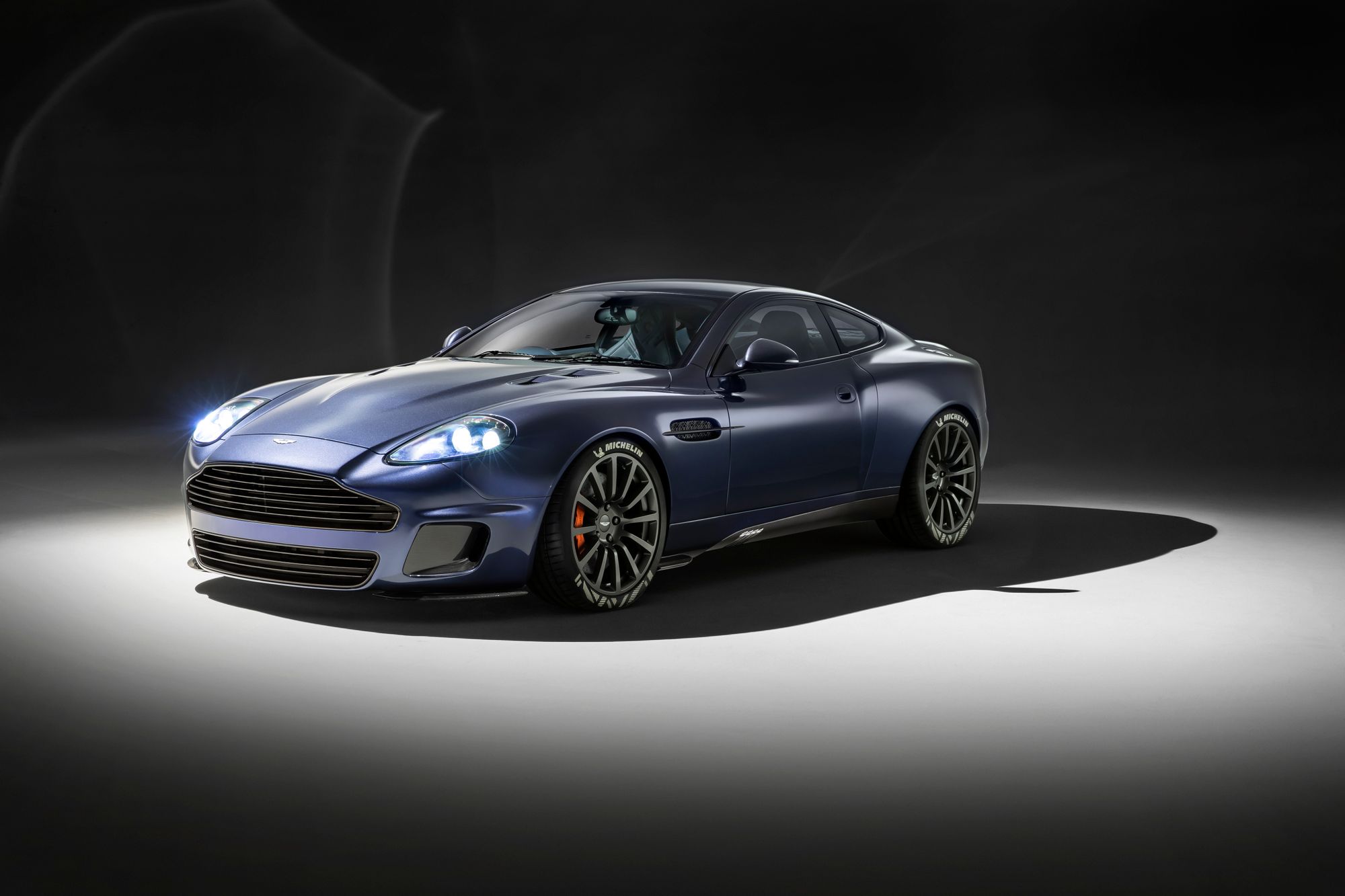
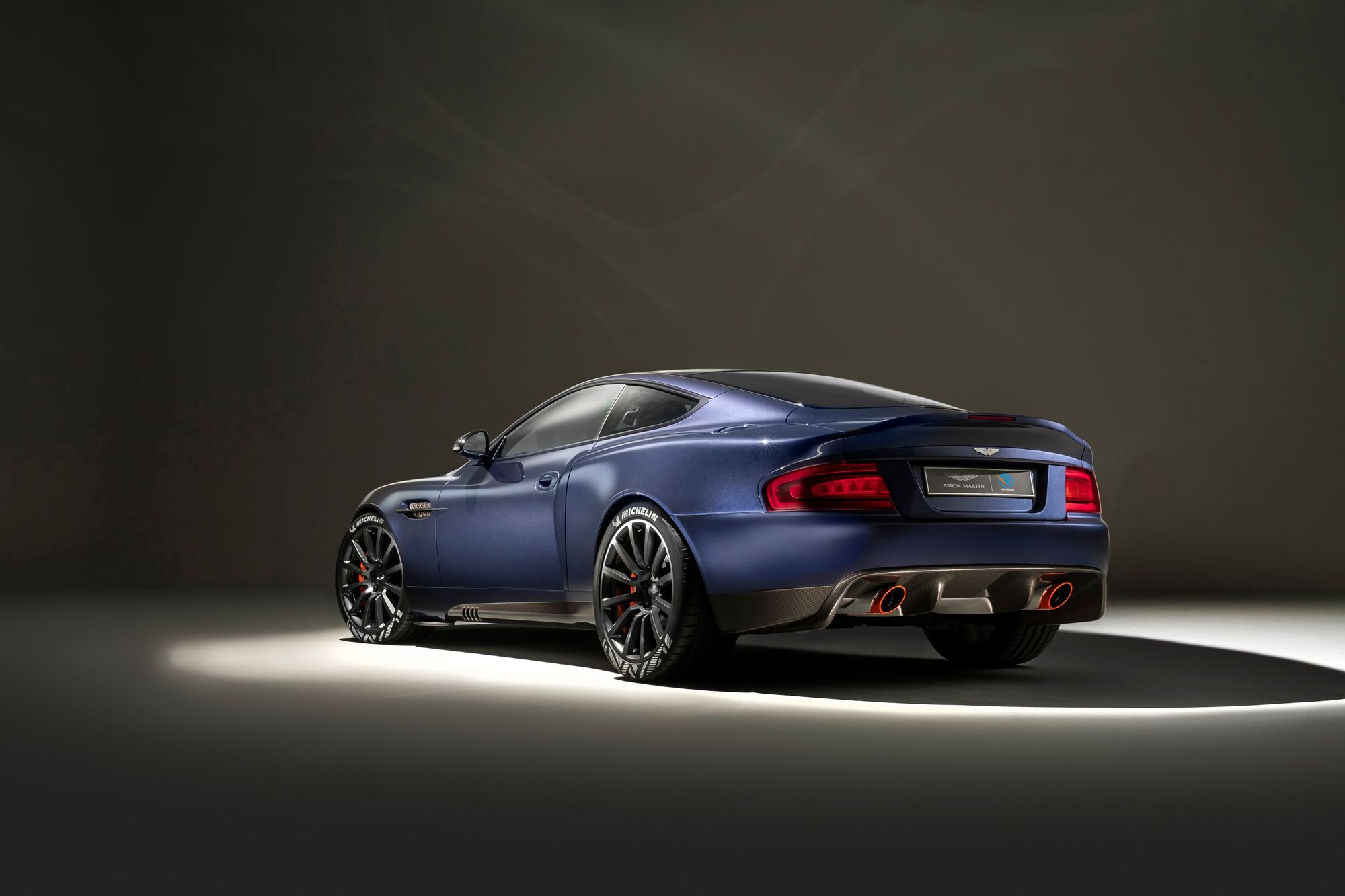
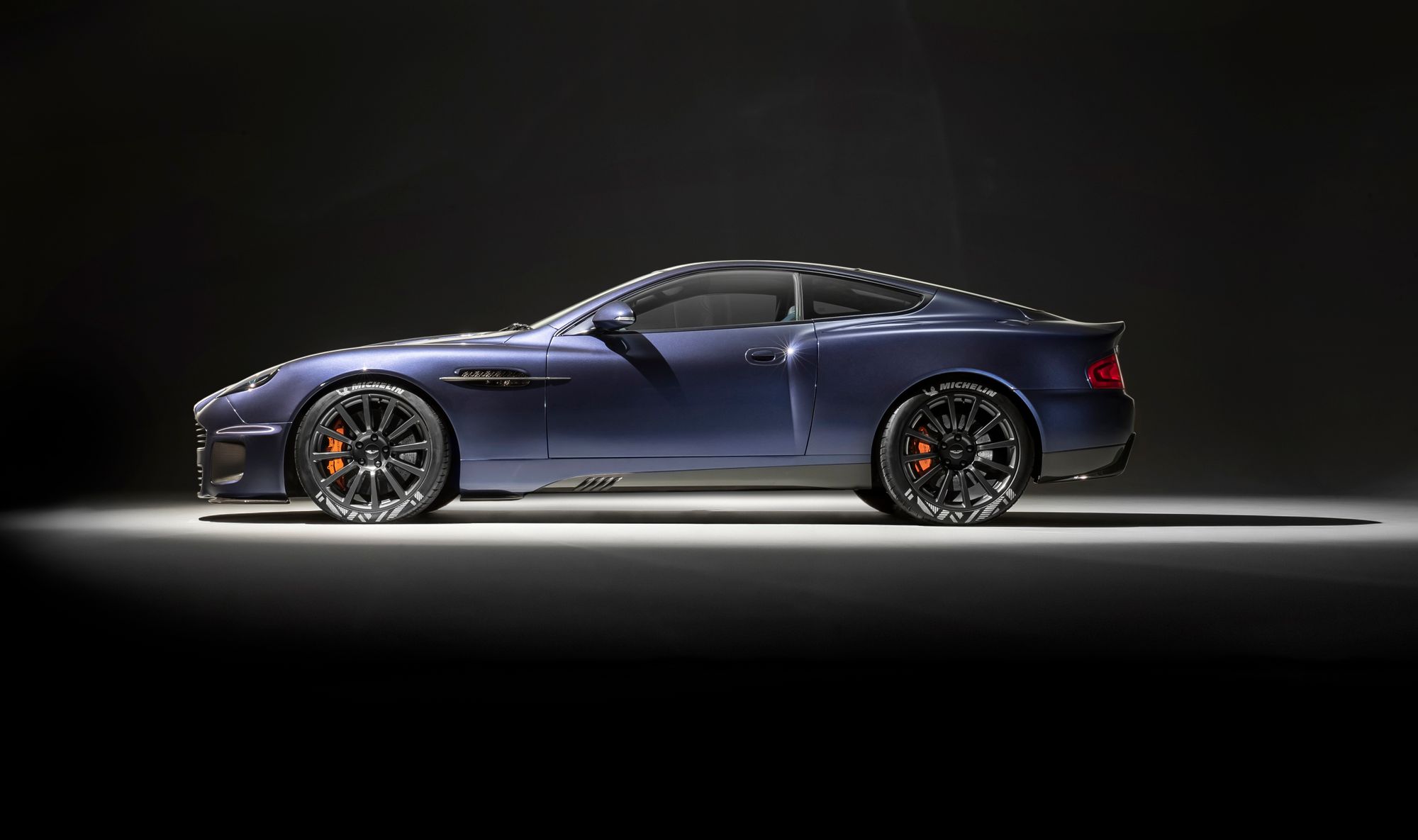
Vanquish 25 by CALLUM. Credit: Callum Design
I approached VC25, as we call it, with a view of what would I do with the car now, having learned so much more about design, having technology that I didn't have then and having the opportunity to just recreate things that weren't quite right, and so that's what that car is all about. It's sort of a one off, we're building 25, but I'm not going to go back and do a back catalogue of all the cars I've worked on and do the same thing. This really was my most special one that I enjoyed, so I thought I'll do it with this one.
I saw the car at the London Classic Car Show back in February and it's just astounding what you've done. Maybe you could tell us about some of the changes and the design elements that you've incorporated in the car and how you went about redesigning them?
It kind of started off as a styling exercise. We've redone the front end, it's more modern, it's more assertive. There's a lot of aggressive cars out there, I don't like the word aggressive, I don't think it's very British, so I think it should be assertive. We've redesigned the rear bumper with a diffuser on it, which actually works very well. We've redesigned all the details, like the window surrounds are all new and the mirrors are new, the wheels are new.
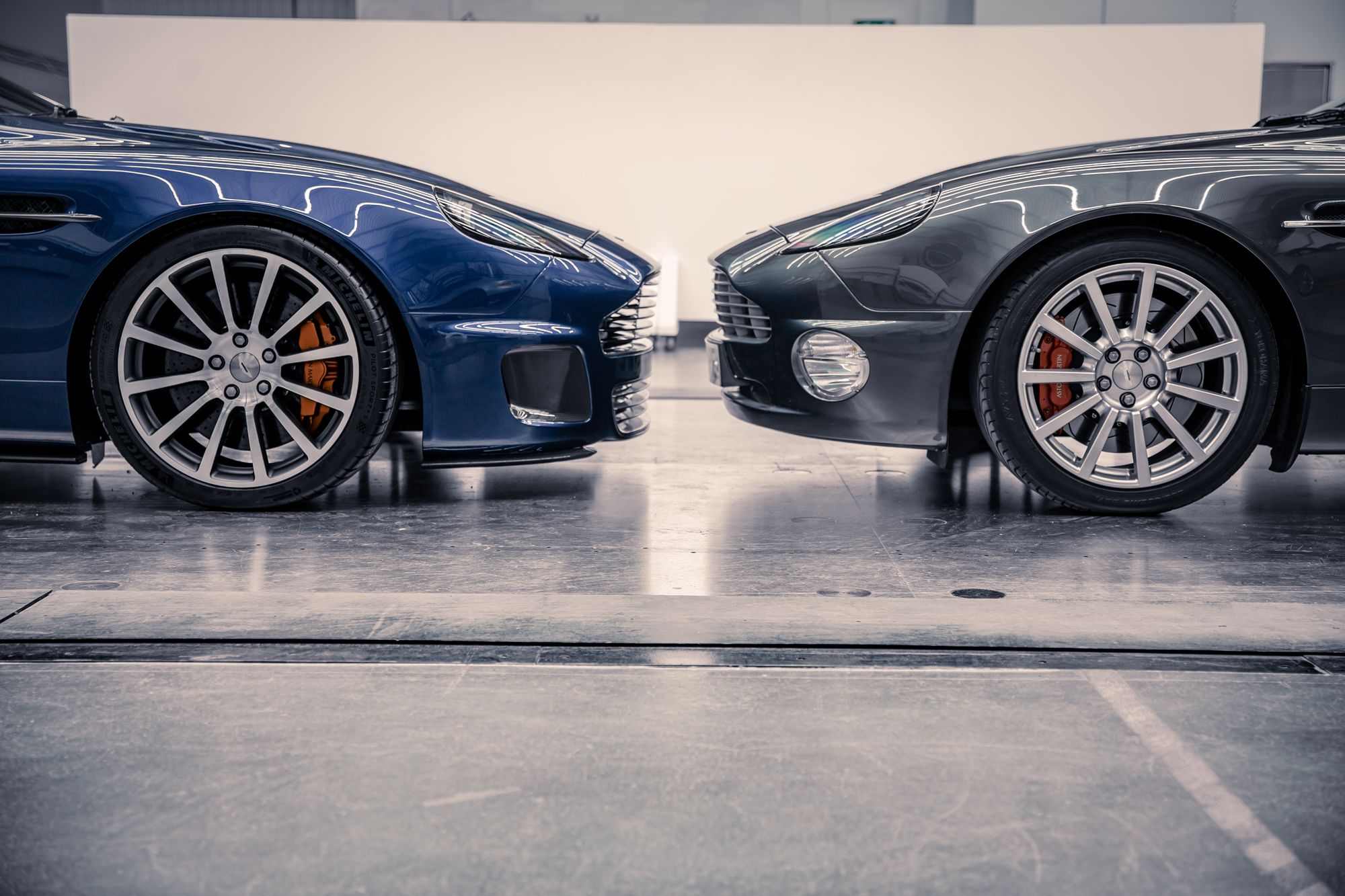
The whole stance is better, the car sits lower, it's got a wider track, it's got bigger wheels, of course. It's all these little details, the sum of the parts, which makes up to something much, much better. And these are little details that will make a difference in the totality of it.
I love cars. I'm not one to just make things look prettier. I was very keen that this car would live up to its promise. So we've done a lot of engineering work on the car. Adam Donfrancesco is our Chief Engineer and he has done a lot of work on the chassis. The engine is 60/70 HP more. We've put equal length headers on it, there's mapping on it, some cylinder head work done on it. So it has some more horsepower but more importantly it handles better, it steers better, it drives better and we're offering a manual box as well as an extra if a customer wished it, as well as a full automatic. So there's a choice of the original or the other two boxes. Our objective was to really take that car, which was fundamentally very good, and turn it into a 21st Century car.
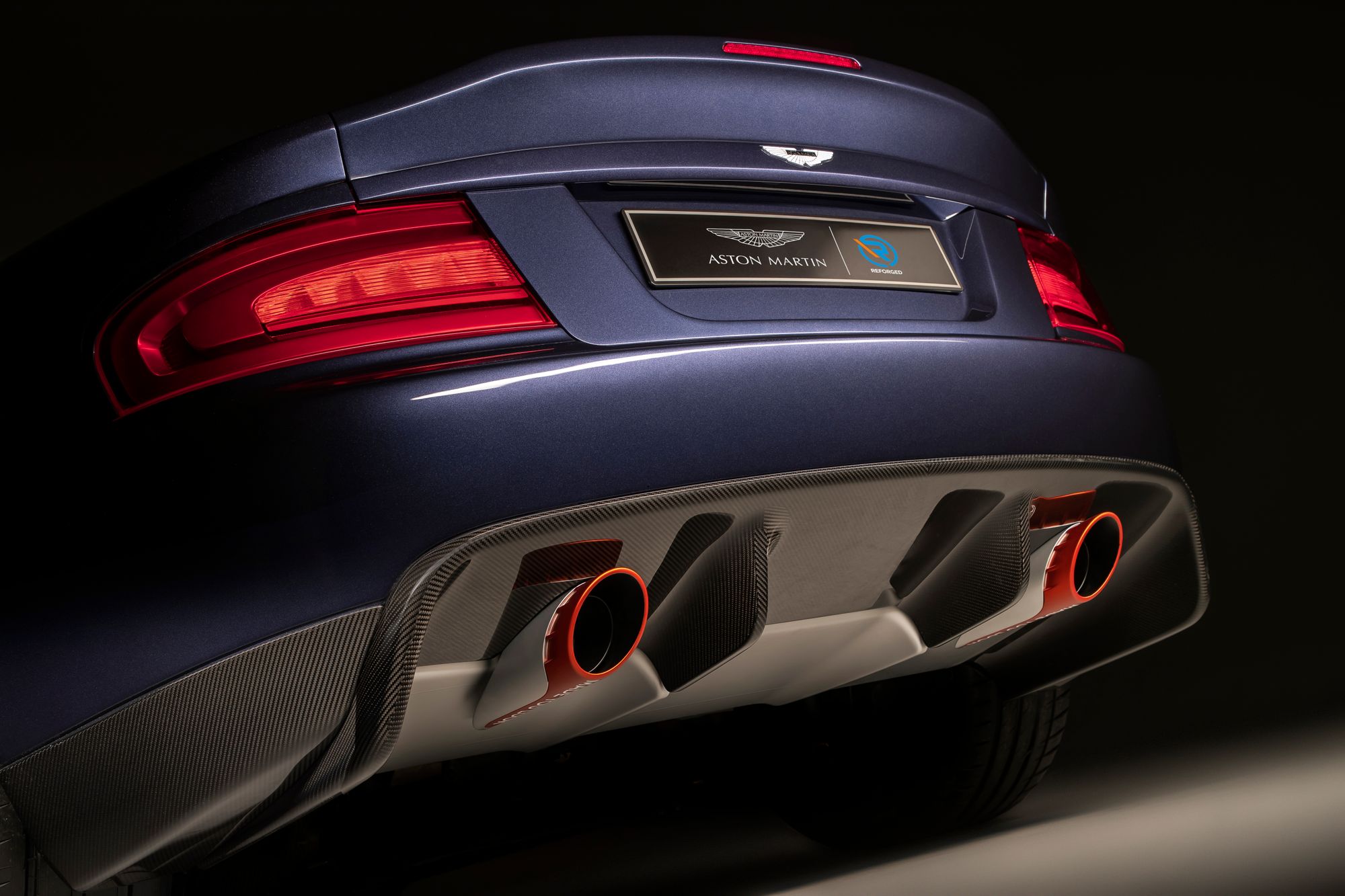
You mentioned some of the details. I remember looking at the car at the London Classic Car Show and I noticed little things such as there's a Bremont watch in the interior and you've also got a David Bowie reference on the fuel filler cap?
Yes, there's lots of little things like that. We've got Mulberry bags in the back, we did a bag with Mulberry. We've designed what I call my fragmented Tartan. It was something I always wanted to do, was to create a Tartan, so we've created something which you see running through the car and the luggage.
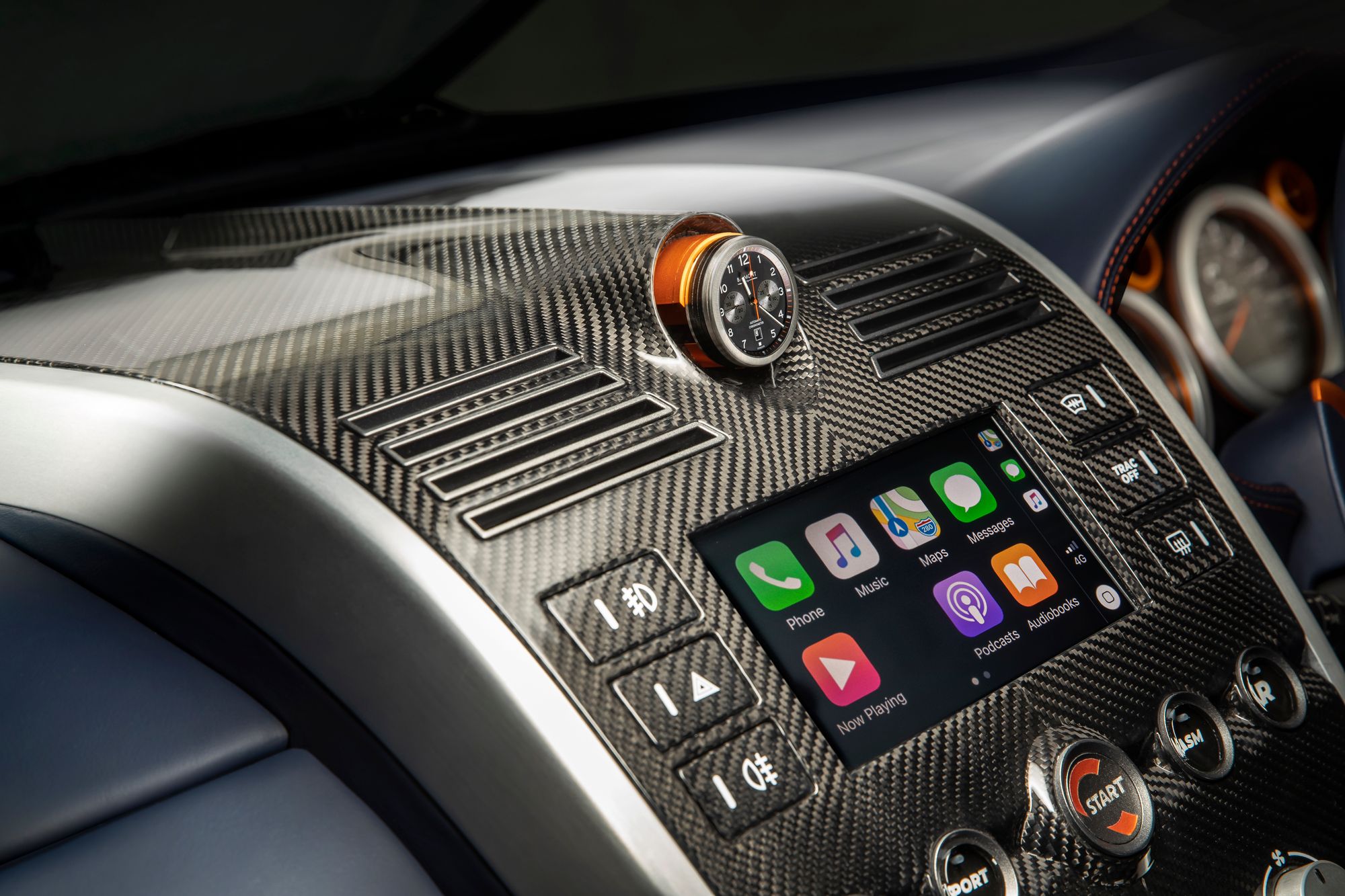
I've always had a great personal and working relationship with the Bremont Watch Company and the English brothers who run it. We did a lot of work with them with Jaguar in the past and I just continued that relationship with this car. We've created this wonderful watch together, which sits in the car and you can take it out and take it away with you. It's a mechanical watch so you have to drive the car to make it work, which is quite a bit of fun. It's just that lovely relationship with other British brands that we're nurturing for good reason. So a good working relationship with Bremont, they're a great watch company, they build fantastic products.
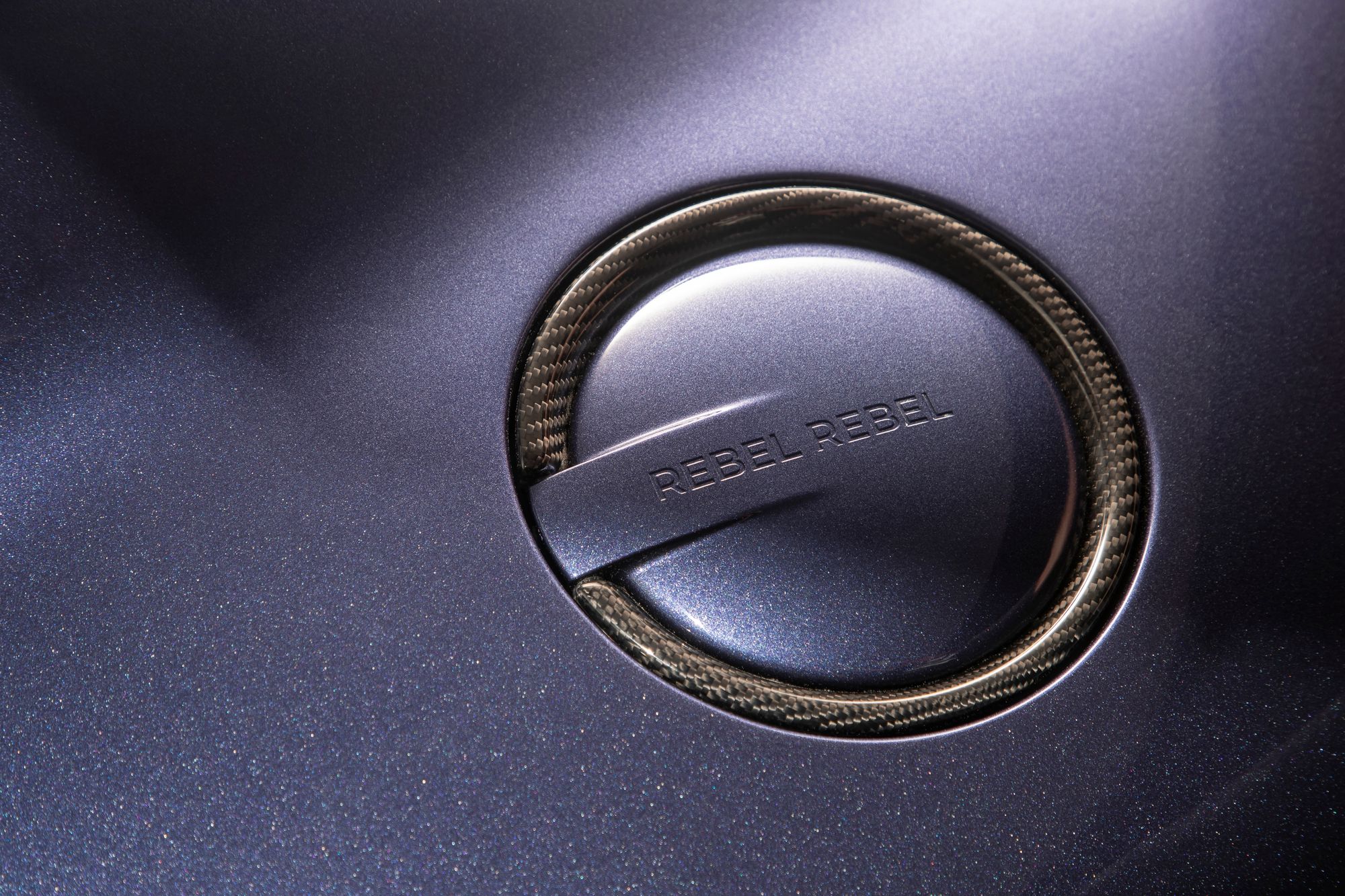
With the Bowie reference, I've always been a great Bowie fan, as I think most people of my generation probably are. I remember at some point we were having some discussions on some of the details of the car and I was feeling particularly assertive about getting my own way on something and I said no this is what we're going to do. I'm going to do this regardless. Somebody said what are you going to put in the filler cap? I said “Rebel, Rebel”. That's the way I've always seen life, so one of my favourite Bowie songs. I've always pushed against the grain, so that's the way I am.
With the Vanquish 25, it's not just a design change, it's a full package with the performance. Do you think that whole package has changed the character of the car or has it still got the original Vanquish feel to it?
When I looked at the Vanquish, I thought this car could sit today amongst all the other traffic, if you could take away all it's foibles and shortcomings. So we've effectively brought it into the 21st Century and once you do all the detail work that belongs to modern cars, including the lamps and the interior, the interior is completely redesigned, it does bring the car into the 21st Century.
So a lot of the spirit of the original is still there, but it's something you could probably bring out today quite happily and say it's a new car because we've caught up on all the detail work that showed its age. So it's just a nice combination of yesterday and today, but it's still got its presence, trust me! In fact it's got more presence than anything ever. It's something I really wanted to do. The car had great presence but I knew it could be more. The next car we're just about to finish, you'll see that quite soon, that's going to have a lot of impact.
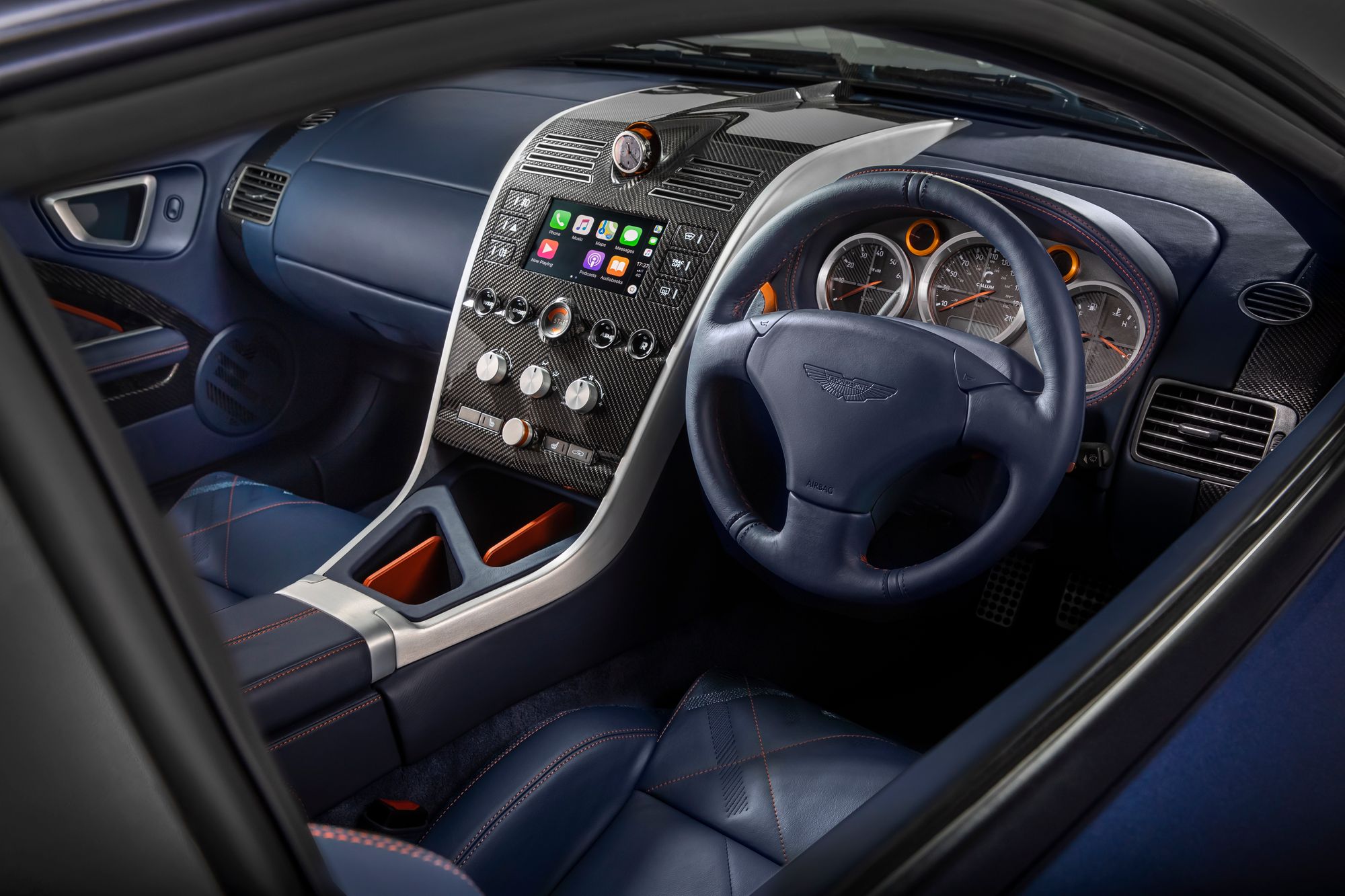
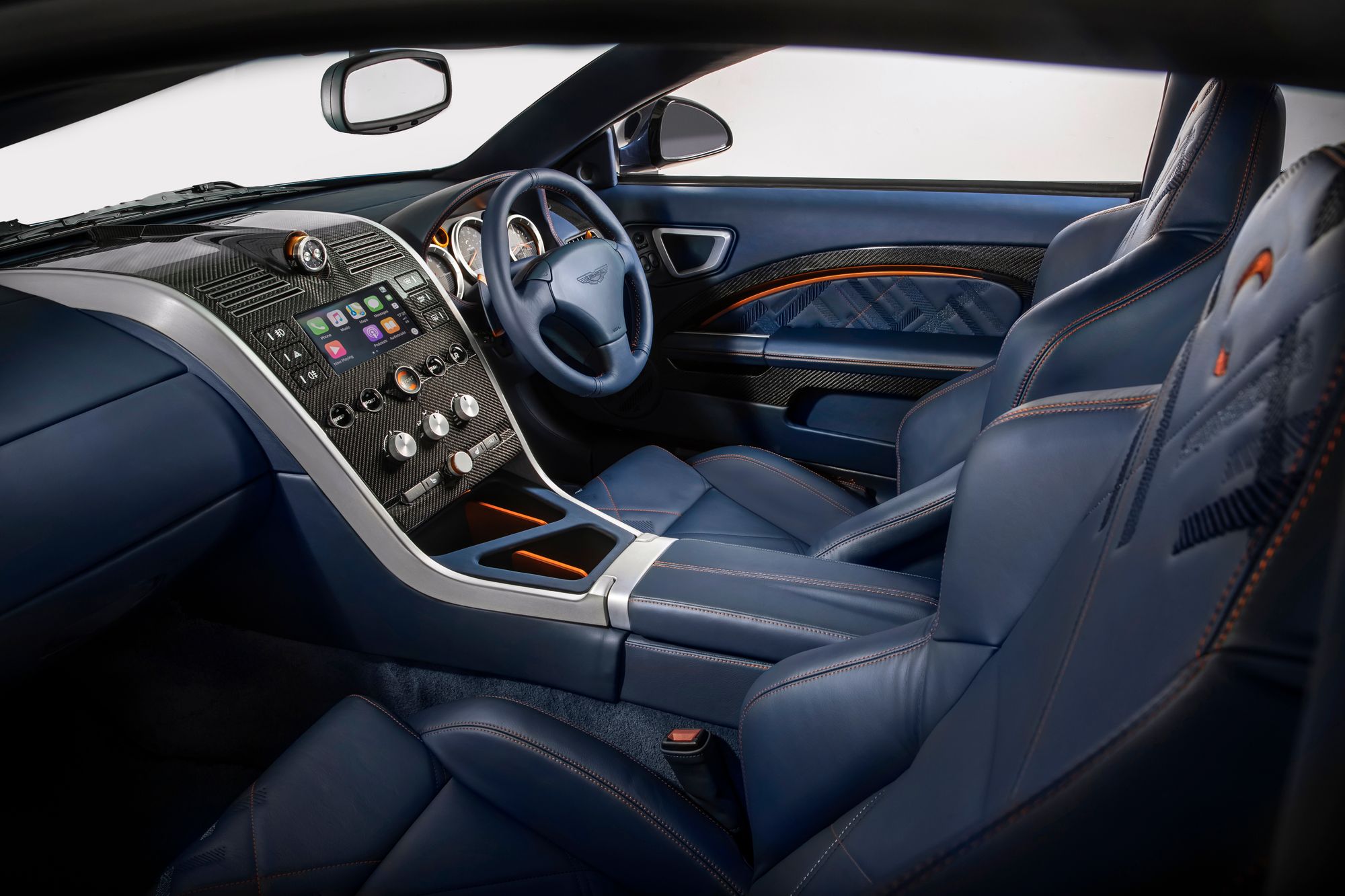
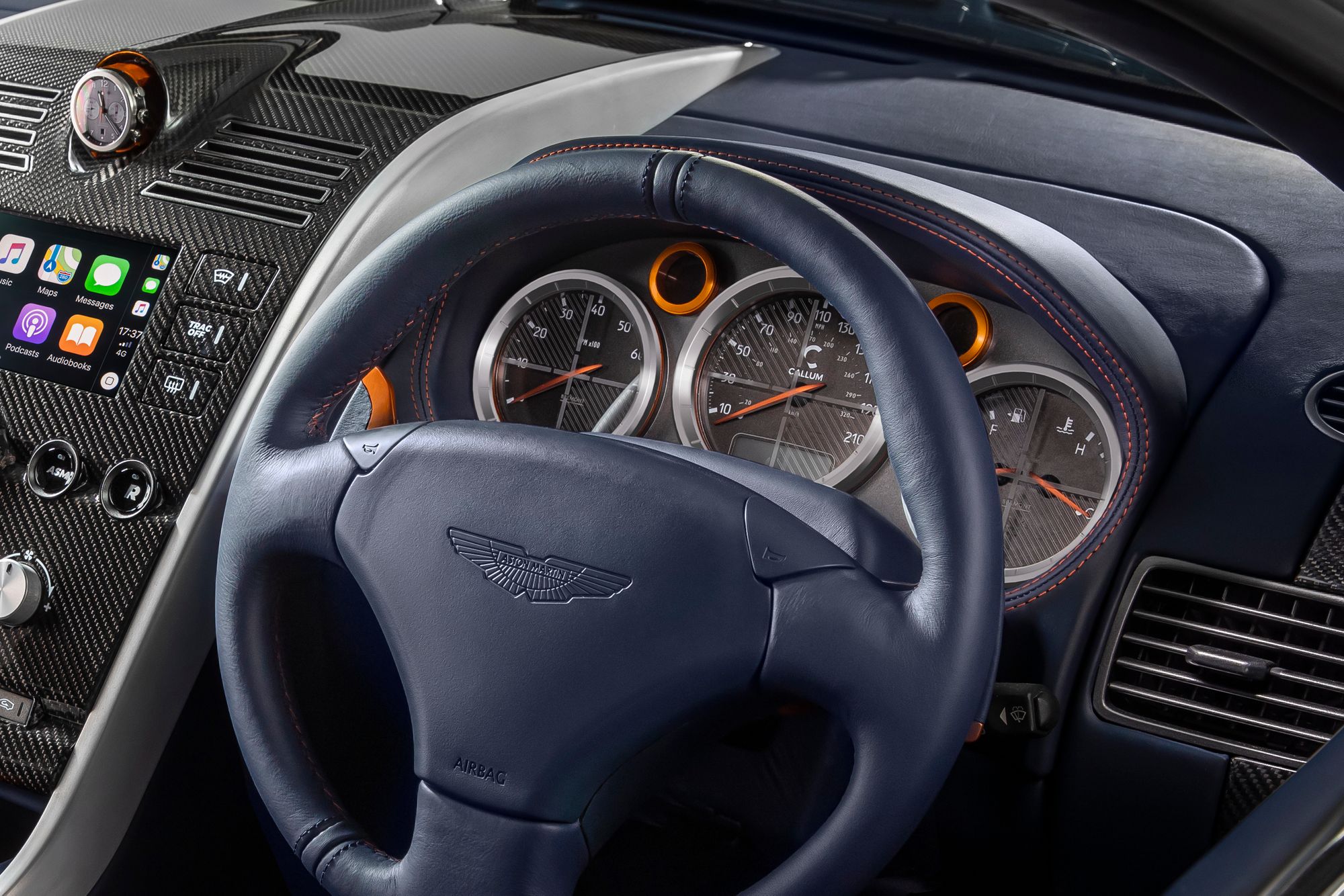
Interior of Vanquish 25 by CALLUM. Credit: Callum Design
That was my next question actually. When can we see the Vanquish 25 by CALLUM on the road?
Quite soon. I think the next month or so you'll see it on the road with other people driving it. We're building car number 3, which is a combination of our chassis car plus our beauty car, as we called it. It will be a fully fledged drivable car which, as I say, has a lot of visual impact. So I think within the next few weeks you will be seeing that. Hopefully you'll get a drive of it.
Don't offer me that, I'll be on your doorstep immediately! After these remastered Vanquish 25s, you mentioned you weren't going to go back through all your back catalogue doing a similar process, what will be your next project with CALLUM?
Funnily enough we were joking about that, we talked about doing a Ford Puma because I designed that car when I was in TWR, which was quite a bit of fun. I'm not sure the business case for Ford Puma would work very well, but it would be a fun car to do wouldn't it? I'm talking about the old one of course.
We've got some furniture coming, we're doing some watch work, we're doing other projects and we're doing other car projects which will see the light of day, in due course. We've got a lot of people interested and asking me to do certain things for them. This lockdown has not been easy. I think people have been reluctant to step out and say let's get on with this, I think people have been waiting for the green light to get on with life. But I'm sure that once that happens, we're going to be very busy with individual requests and design studies.
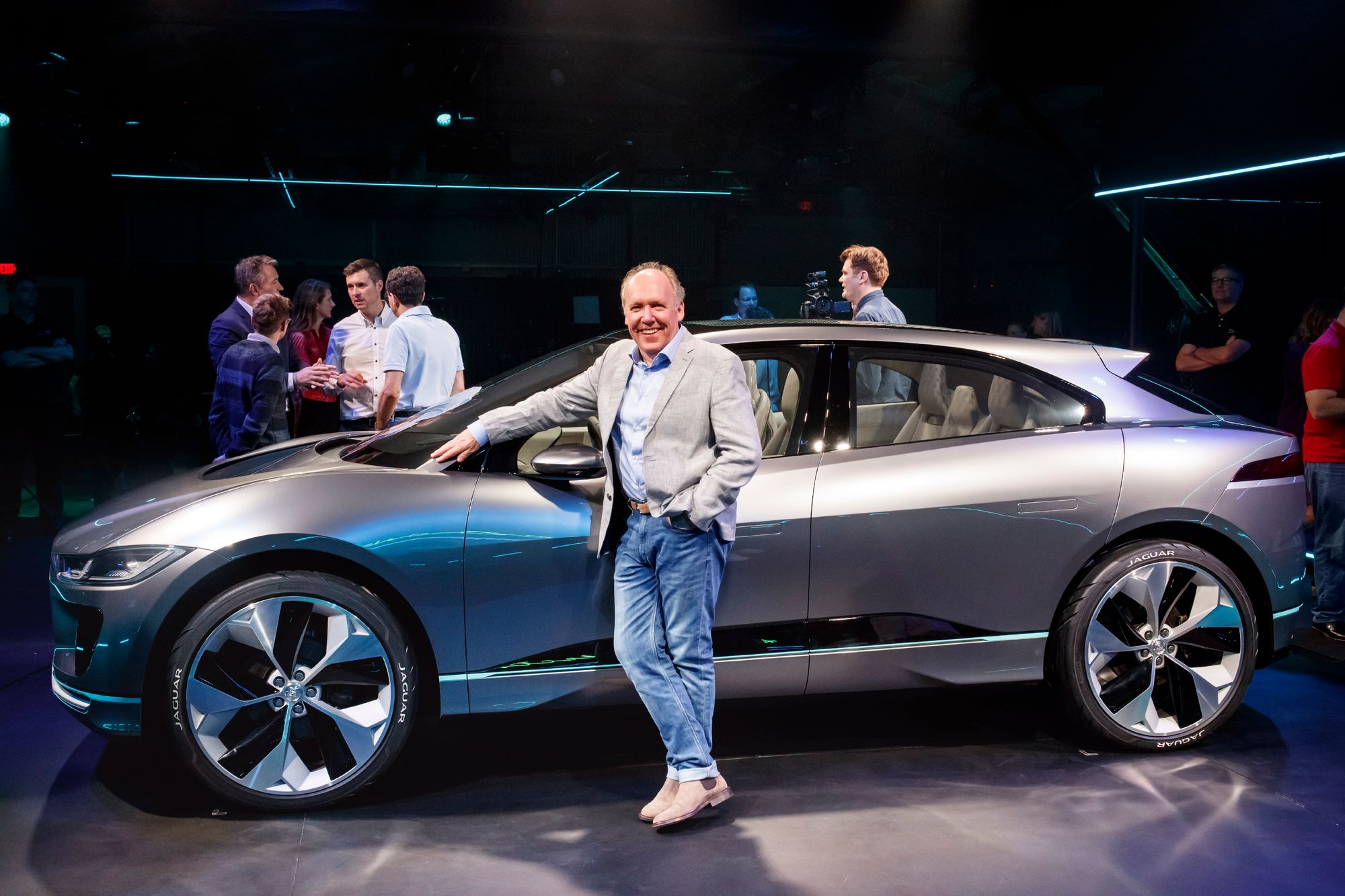
I'm conscious of your time, so to end with we have some quick fire questions. First of all, your favourite car you've designed to date?
It's almost like asking who your favourite child is. I think the I-PACE probably. I love the F-Type. I drive an F-Type every day still and it's really quite a beautiful car and the team that I worked with, I have to give the team credit for most of the stuff that I've been credited for because they've just been brilliant. But the I-PACE is the one that was a personal journey for me because I wanted to create something different given the freedom of the electric platform. The car is what, 2 or 3 years old now, but it still stands in its own place. It's very individual and works. So that's my favourite one at the moment.
I have to say I'm an Aston man, through and through but when the I-PACE and the F-Type came out, I have to say I was thinking, maybe I should try these Jaguars. But yes, beautiful cars. My next question is, British or Italian design?
I think through the 50s and 60s definitely Italian design. That's when I grew up and was influenced by so much of it, as well as incidentally American GM design. That was a great influence on me too. You think of what GM was doing at that point with Bill Mitchell, that was a great era in terms of car design. But later on, British designers around the world have created some great cars. I still think that British design still dominates worldwide design in so many ways. You look around any top design studio you'll find a Brit in there somewhere, having a great influence on it all. So I think latterly British design has got a bit of a leadership. I'll probably get a lot of hate mail for saying that but I think it is.
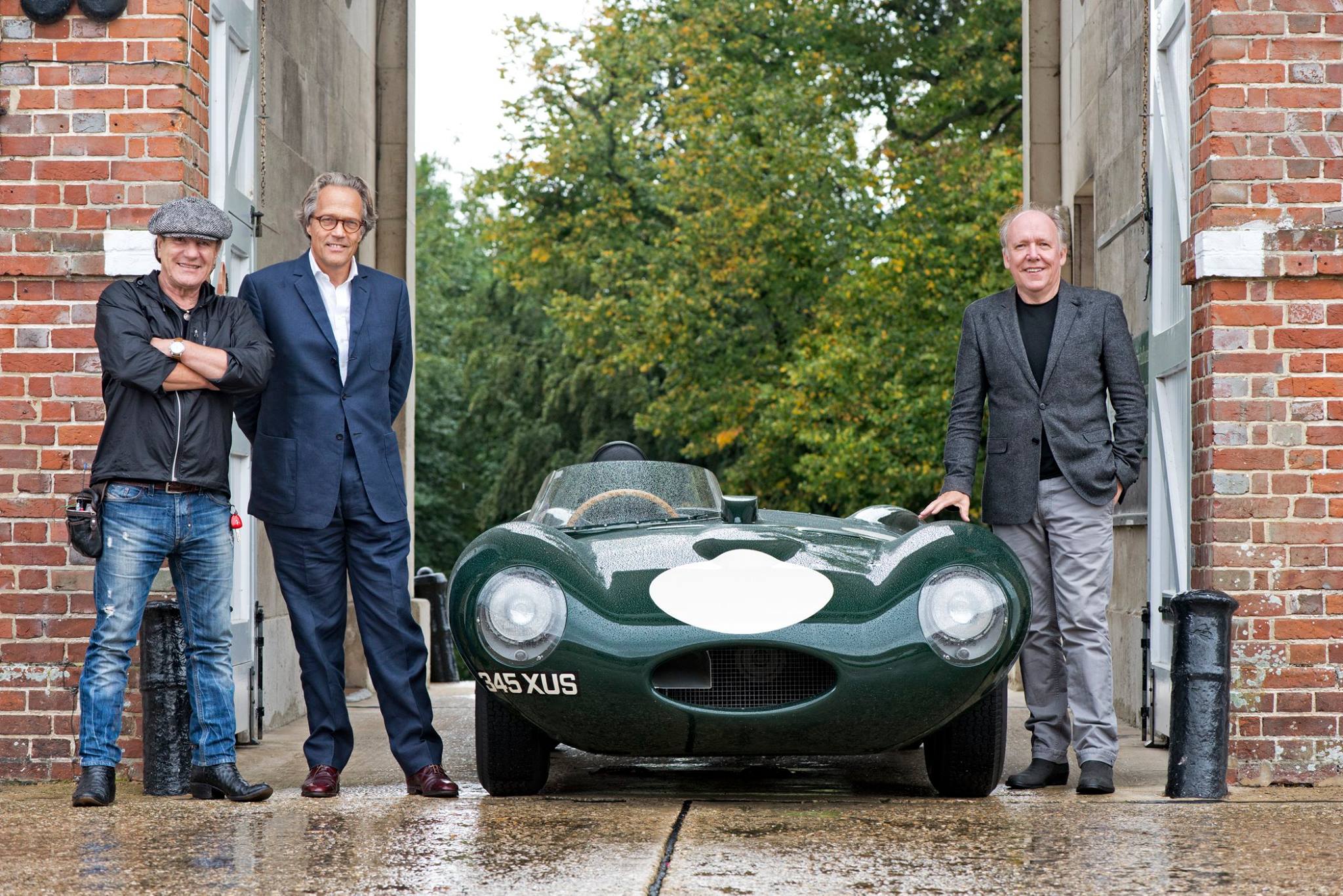
Classic or modern cars?
I love them all. I've got a lot of cars myself, nothing too exotic, but I love them for the reasons that I loved them when I was growing up. Modern cars are just completely different entities now. I hope they're never seen by too many as just commodities as they're such clever objects. They're the most complicated things in the world. They're as complicated as jet airliners, believe me, and yet we just take them for granted. So modern car technology is just phenomenal and I don't think we really understand how good they are. So I have a love for both, there's a place for both.
What's currently in your garage?
Classic-wise I've got a Mini Cooper, I've got the Vanquish, I've got an XJ Coupé, which is one of my favourites. I've got a couple of American cars, I've got a Chevy pick up truck from '72. I've got a Ford hotrod, 1932 Ford Model B Deuce Coupe, one of my favourites. I've got a TR6, probably my favourite car to drive actually. A Beetle convertible, the old one of course. I've got an Escort RS2000, which is a fun thing. I kind of lose count of them, really. An Alfa Romeo GTV, the Bertone one, the Giugiaro one.
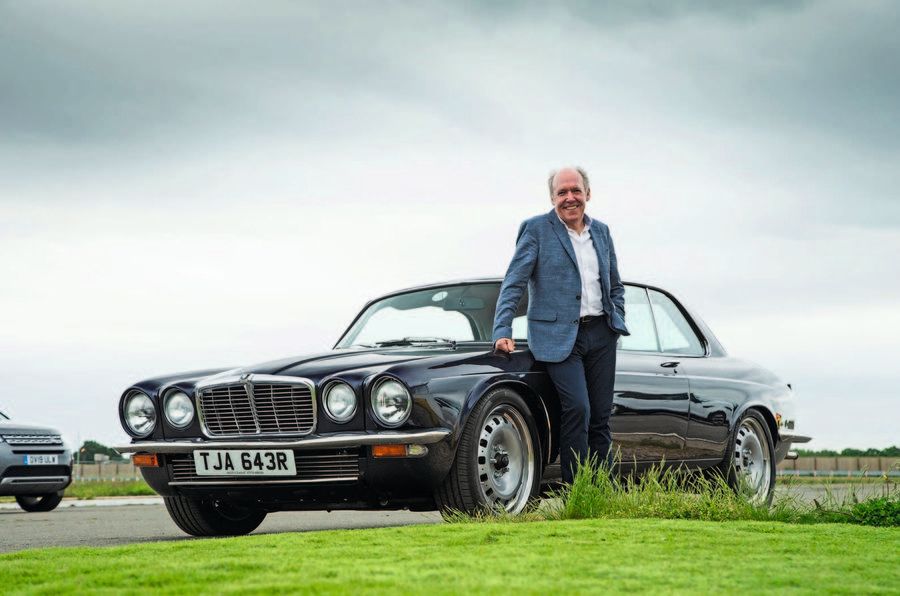
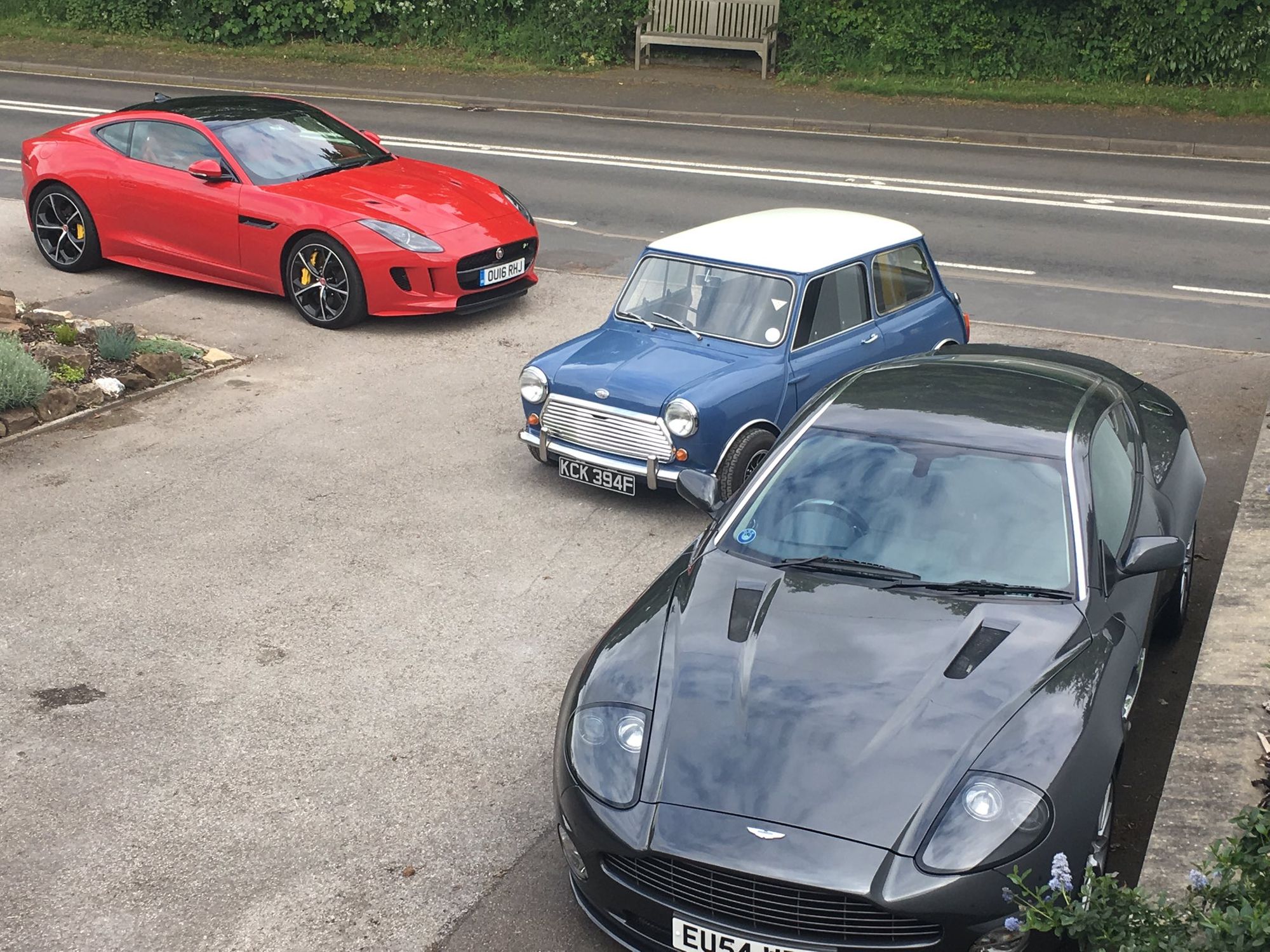

A selection of Ian's classic cars. Credit: Ian Callum
Yes, I've got one of those as well, actually. I've got a 1975 GT Junior.
Yes, I'm having a twin spark engine put into it at the moment, which should be quite hairy. [laughs] So yes I've got a few, but a nice mix of cars I've always liked and wanted to own, and they're just a joy to drive.
And then a connected question; money no object, and unfortunately excluding cars you've designed, what is your ultimate three car garage?
I'd have the hot rod, which I have anyway. I'd have a Mini Cooper, which I have. And money no object, I'd have a Ferrari 250 SWB.
One of my favourite cars as well.
A beautiful thing. I've been very fortunate to drive a couple of very special ones, and just a wonderful car to drive.
Well, thank you so much Ian. That's been a fascinating insight into your world of car design. While some of your Aston Martin designs already some of my favourite ever cars, I think hearing from you today has cemented their rightful place at the very top. So thank you so much and I'm excited to track the Vanquish 25s and indeed all your future projects with CALLUM going forward. So, thank you very much.
You can find more information about CALLUM and the Vanquish 25 by CALLUM at www.callumdesigns.com.

